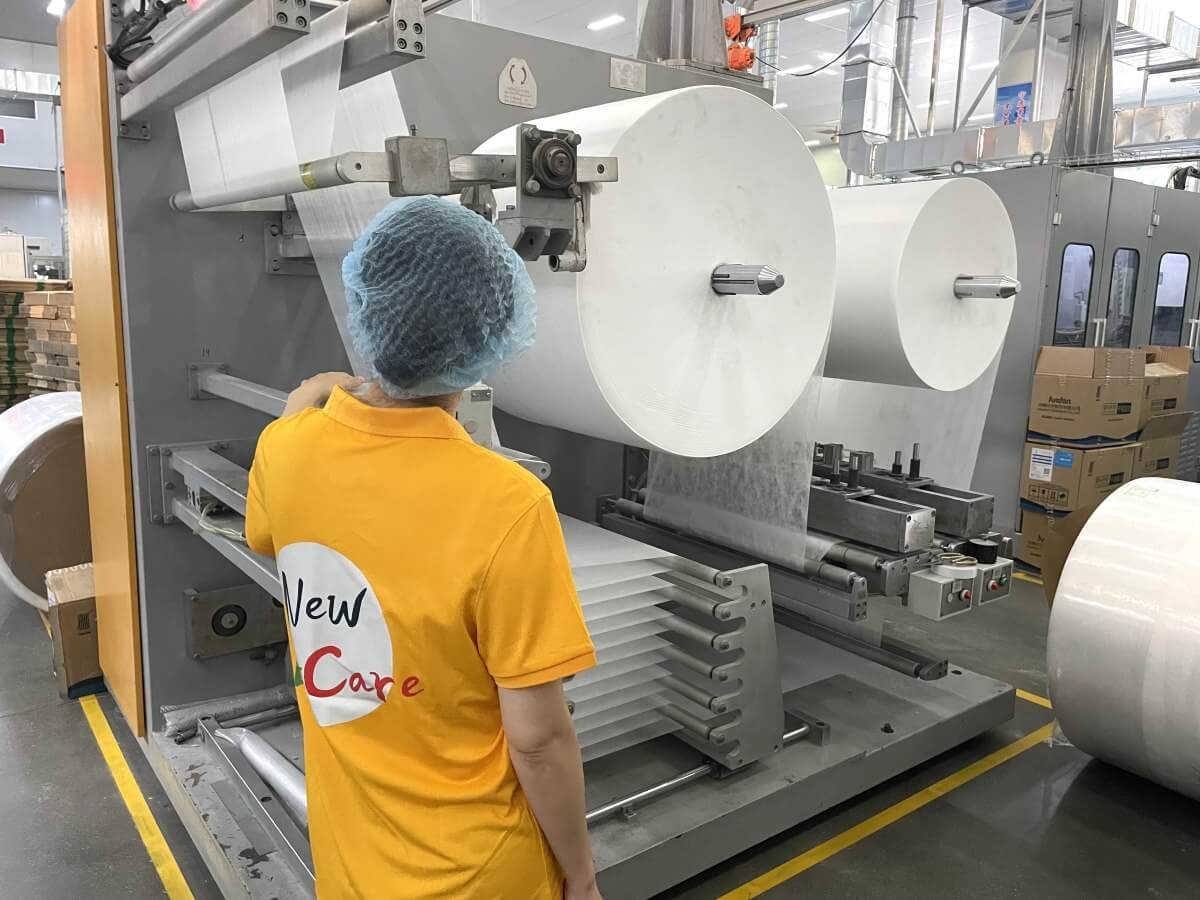Baby pull-ups are more than just a transitional product from diapers; they represent a significant step in a child’s development toward independence. These products not only offer convenience to parents but also support toddlers as they learn new skills associated with toilet training. This makes the role of manufacturers critical, as they need to combine functionality, comfort, and safety in every product. In this article, we delve into the various factors that are pivotal in manufacturing baby pull ups, from the selection of materials to compliance with global safety standards.
Key Materials Used
Fabrics and Absorbents
The selection of materials in manufacturing baby pull ups is crucial for ensuring product safety and comfort. The most commonly used materials include cotton, bamboo fibers, and synthetic blends that offer softness and breathability. Absorbent layers are typically made from combinations of cotton, wood pulp, and superabsorbent polymers, which are key to preventing leaks and keeping the skin dry. Innovations such as the inclusion of aloe-vera or chamomile extracts are also becoming popular for their skin-soothing properties, showcasing how material choices are evolving to meet consumer demands for gentler and safer products.
Safety and Comfort Materials
Beyond the basic materials, manufacturers are increasingly focusing on hypoallergenic and non-toxic components that enhance safety and comfort. Fabrics treated with natural antibacterial solutions help in preventing diaper rash, while elastic waistbands and leg cuffs made from stretchable materials ensure a snug but comfortable fit. The safety of these materials is always a priority, with rigorous testing for harmful substances to meet or exceed current regulatory standards.
Manufacturing Processes
Cutting and Shaping
The production of baby pull ups begins with the cutting and shaping of fabrics and absorbent layers. Advanced cutting technology allows for precise dimensions, which is essential for minimizing waste and ensuring consistency in product size and shape. The cut materials are then shaped to conform to ergonomic designs that enhance comfort and leakage protection.
Assembly and Quality Control
Once cut and shaped, the components of baby pull ups are assembled using high-speed machinery. This stage often involves the application of adhesives, elastic bands, and fasteners. Following assembly, each batch undergoes a series of quality control checks to ensure that the final products are defect-free and meet all specifications. Automated visual inspection systems and manual checks are employed to identify any inconsistencies or defects.
Design Considerations
Ergonomics and Fit
The design of baby pull ups is critical in ensuring that they not only meet the functional requirements of absorbency and leak prevention but also provide optimal comfort and fit. Manufacturers invest in extensive research and development to create ergonomic designs that accommodate the natural movements of toddlers. This includes features like flexible waistbands, resealable sides, and special contouring, which help to prevent sagging and ensure a close fit without restricting movement.
Aesthetic and Functional Design
While functionality is paramount, the aesthetic appeal of baby pull ups also plays a significant role in consumer satisfaction. Manufacturers are increasingly using bright colors, child-friendly patterns, and characters from popular children’s media to make their products more appealing to both parents and children. This not only enhances the visual appeal but also encourages children to wear them, thus aiding in the toilet training process.
Regulatory Compliance and Standards
Compliance with industry standards and regulations is a non-negotiable aspect of manufacturing baby pull ups. These regulations ensure that products are safe for children and meet the required health and environmental standards.
Health and Safety Regulations
Manufacturers must adhere to various national and international safety standards, which dictate the types of materials that can be used, the acceptable levels of certain chemicals, and the testing methods required to confirm safety and effectiveness. For instance, certifications like the OEKO-TEX Standard 100 are sought after as they guarantee that baby pull ups are free from harmful substances.
Environmental Regulations
Environmental compliance is also critical, especially in a market where consumers are increasingly aware of ecological impacts. Regulations may include restrictions on waste production during manufacturing and mandates for the use of recycled or biodegradable materials. These standards not only help protect the environment but also align with the growing consumer preference for sustainable products.
Technology in Manufacturing
Automation in Production
The integration of automation in the production of baby pull ups has revolutionized the manufacturing process, enhancing both efficiency and consistency. Automated assembly lines are capable of producing thousands of pull ups per hour, ensuring that each product is identical in quality and performance. This level of precision helps manufacturers maintain a steady supply chain and meet consumer demand swiftly. Additionally, automation minimizes human error and reduces the cost of production by optimizing material usage and labor.
Innovations in Material Technology
Technological advancements are not limited to machinery; they also extend to the materials used in baby pull ups. Modern manufacturers utilize advanced absorbents that offer superior fluid retention and odor control, improving the product’s performance significantly. Innovations like breathable yet waterproof outer layers are examples of how technology is used to enhance the functionality and comfort of baby pull ups, making them more appealing to health-conscious parents.
Quality Assurance
Testing Protocols
Quality assurance in baby pull ups manufacturing involves rigorous testing protocols to ensure that each product is safe and effective. Manufacturers typically conduct a series of tests, including absorbency, leak protection, and wearability, under various conditions to mimic actual usage. These tests are crucial for maintaining high standards and fostering trust with consumers. Moreover, ongoing research and development allow for continuous improvement of products based on feedback and testing results.
Continuous Improvement Processes
Manufacturers of baby pull ups often implement continuous improvement processes to enhance product quality and efficiency over time. This may include feedback loops from consumers, routine reassessment of supply chain vendors, and regular updates to technology and processes. By committing to continuous improvement, manufacturers can adapt to changing market conditions and consumer expectations, ensuring long-term success and innovation in their products.
Market Trends and Consumer Preferences
Eco-Friendly Products
As environmental awareness increases, more parents are seeking eco-friendly baby pull ups. Manufacturers are responding by developing products made from sustainable materials such as organic cotton or bamboo and employing production methods that reduce environmental impact. This trend is not only driven by consumer preference but also by potential regulatory changes favoring sustainable practices in manufacturing.
Customization and Personalization Options
Another significant trend in the baby pull ups market is the demand for customized and personalized options. Today’s consumers value products that cater to specific needs and preferences. Manufacturers are leveraging technologies such as digital printing to offer a wider range of aesthetic choices, including personalized designs. This capability not only enhances consumer satisfaction but also allows brands to differentiate themselves in a competitive market.
Challenges in the Industry
Supply Chain Issues
Manufacturers of baby pull ups face various supply chain challenges, including fluctuating raw material costs and logistical disruptions. Effective supply chain management is crucial for maintaining production efficiency and meeting market demand. Manufacturers must develop robust supply chain strategies that include diversified suppliers and contingency plans to mitigate these risks.
Competition and Market Pressure
The baby pull ups market is highly competitive, with numerous brands vying for consumer attention. To stand out, manufacturers must continuously innovate in both product design and marketing strategies. This involves investing in research and development, understanding consumer behavior, and adopting advanced marketing techniques to enhance brand visibility and consumer loyalty.
Conclusion and Future Outlook
The industry for baby pull ups is evolving with advancements in technology, shifting market demands, and increasing regulatory standards. Manufacturers who stay ahead of these changes by investing in innovation, adhering to strict quality controls, and responding to consumer preferences will continue to thrive. The future of baby pull ups looks promising, with opportunities for growth in eco-friendly products and personalized offerings that meet the unique needs of modern families.

